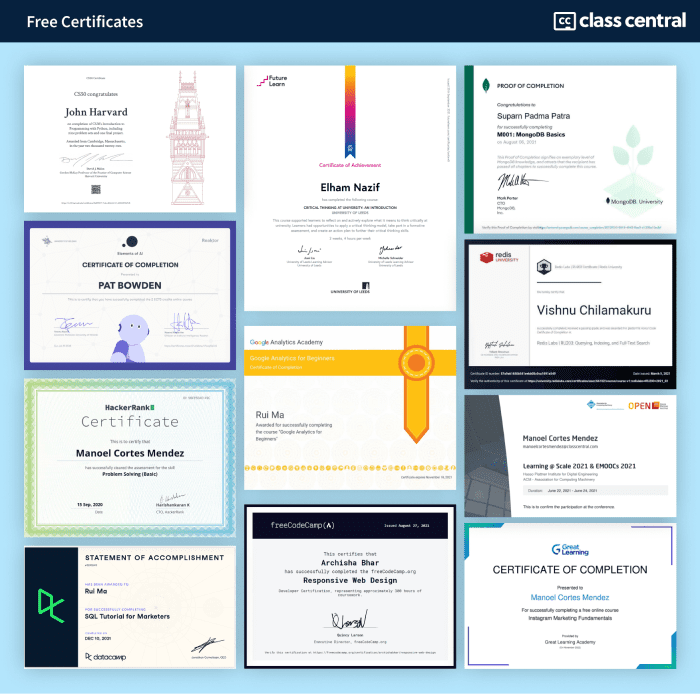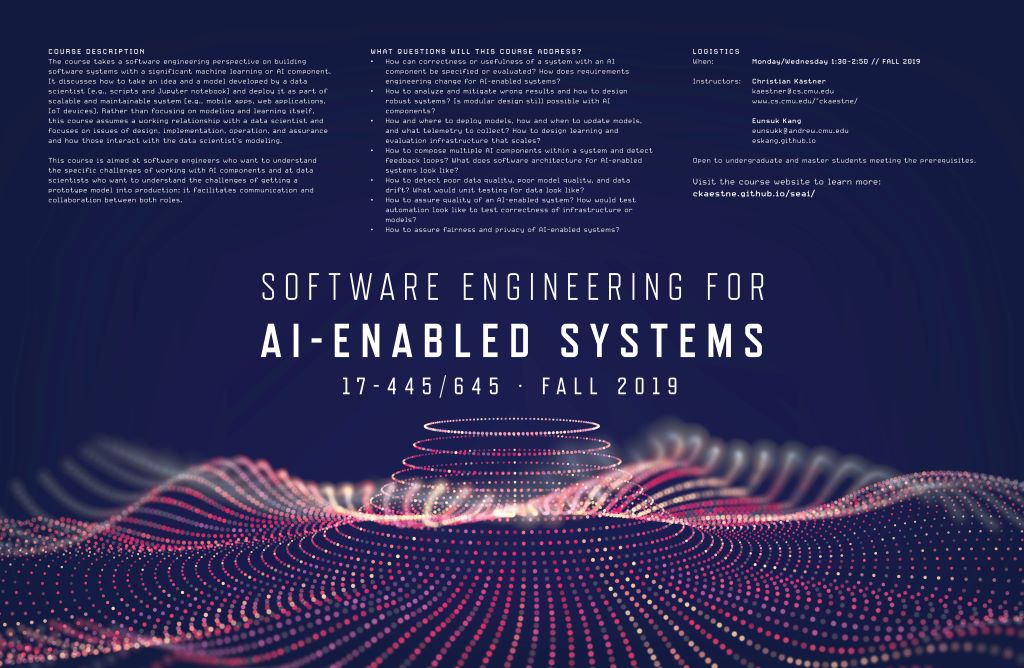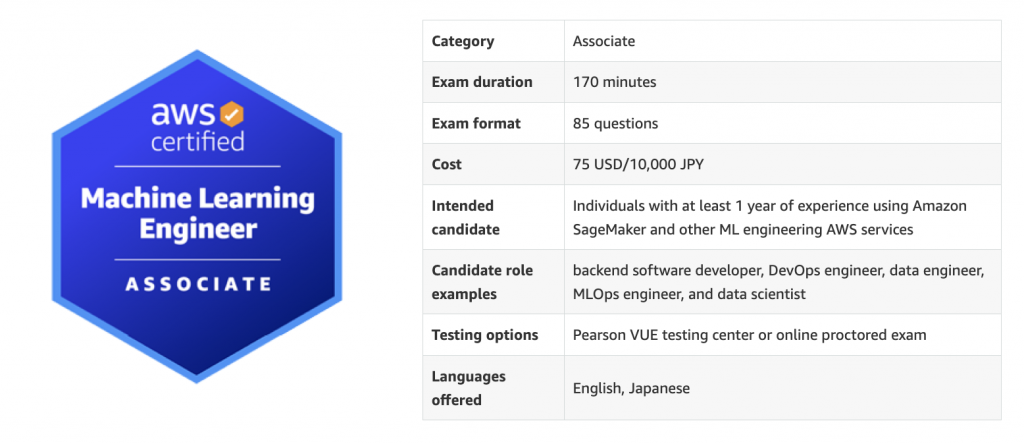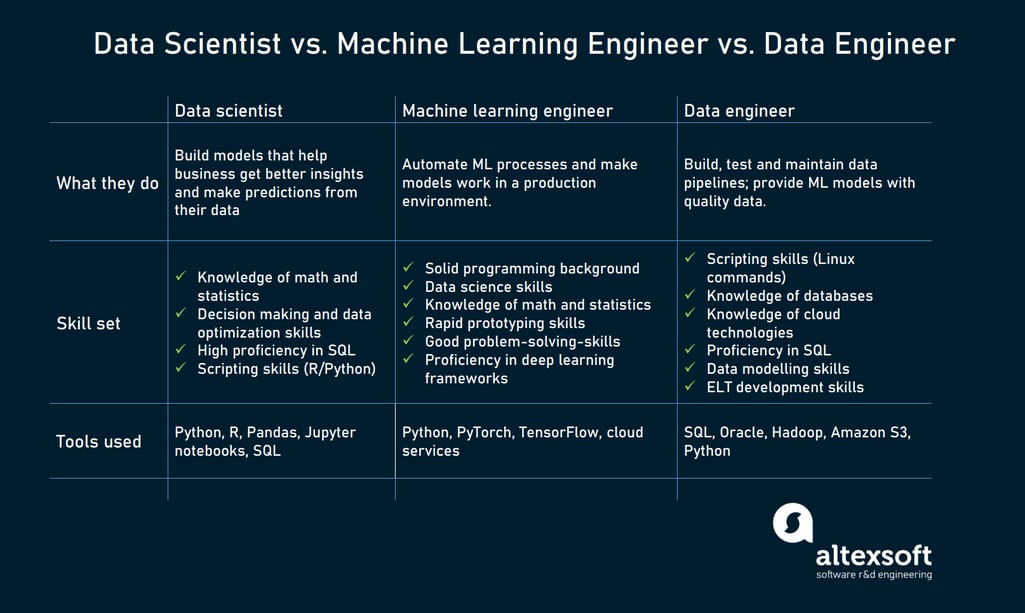All Categories
Featured
Table of Contents
- – Getting My From Software Engineering To Machin...
- – Fascination About Certificate In Machine Learning
- – What Does Professional Ml Engineer Certificat...
- – The 7-Second Trick For Machine Learning Is St...
- – The Ultimate Guide To How To Become A Machin...
- – The Definitive Guide for What Is The Best Ro...
- – The Of Fundamentals To Become A Machine Lear...
Some individuals believe that that's unfaithful. Well, that's my entire job. If someone else did it, I'm going to utilize what that individual did. The lesson is placing that aside. I'm requiring myself to analyze the possible options. It's even more concerning taking in the content and attempting to apply those ideas and much less about locating a collection that does the work or searching for someone else that coded it.
Dig a little bit deeper in the math at the beginning, simply so I can construct that structure. Santiago: Ultimately, lesson number seven. I do not believe that you have to comprehend the nuts and screws of every formula before you utilize it.
I would certainly have to go and examine back to in fact obtain a much better instinct. That doesn't imply that I can not address things making use of neural networks? It goes back to our arranging example I think that's simply bullshit advice.
As a designer, I've serviced several, many systems and I have actually used lots of, many points that I do not recognize the nuts and screws of just how it works, despite the fact that I recognize the influence that they have. That's the last lesson on that thread. Alexey: The amusing thing is when I think concerning all these collections like Scikit-Learn the formulas they use inside to apply, for instance, logistic regression or something else, are not the exact same as the algorithms we study in machine learning courses.
Getting My From Software Engineering To Machine Learning To Work
Even if we tried to find out to get all these basics of machine discovering, at the end, the algorithms that these libraries make use of are different. Santiago: Yeah, definitely. I assume we require a lot much more pragmatism in the industry.

I usually talk to those that desire to function in the industry that desire to have their influence there. I do not dare to talk concerning that because I do not understand.
Right there outside, in the market, pragmatism goes a lengthy method for certain. Santiago: There you go, yeah. Alexey: It is an excellent inspirational speech.
Fascination About Certificate In Machine Learning
One of the points I intended to ask you. I am taking a note to talk regarding progressing at coding. Initially, let's cover a couple of points. (32:50) Alexey: Let's begin with core devices and structures that you need to discover to actually shift. Allow's say I am a software engineer.
I recognize Java. I understand exactly how to utilize Git. Perhaps I understand Docker.
Santiago: Yeah, definitely. I think, number one, you should start learning a little bit of Python. Considering that you already recognize Java, I do not think it's going to be a substantial shift for you.
Not due to the fact that Python is the very same as Java, yet in a week, you're gon na obtain a lot of the distinctions there. Santiago: After that you obtain particular core tools that are going to be utilized throughout your whole occupation.
What Does Professional Ml Engineer Certification - Learn Do?
You get SciKit Learn for the collection of device learning formulas. Those are devices that you're going to have to be utilizing. I do not suggest just going and learning about them out of the blue.
Take one of those courses that are going to start introducing you to some issues and to some core ideas of maker learning. I do not remember the name, however if you go to Kaggle, they have tutorials there for cost-free.
What's great about it is that the only need for you is to understand Python. They're mosting likely to present a trouble and inform you how to use decision trees to fix that details trouble. I assume that process is very effective, due to the fact that you go from no machine finding out history, to understanding what the trouble is and why you can not resolve it with what you understand now, which is straight software engineering techniques.
The 7-Second Trick For Machine Learning Is Still Too Hard For Software Engineers
On the various other hand, ML engineers focus on building and deploying machine knowing versions. They focus on training models with data to make forecasts or automate tasks. While there is overlap, AI designers handle even more diverse AI applications, while ML designers have a narrower focus on artificial intelligence algorithms and their useful execution.

Equipment learning engineers concentrate on creating and deploying equipment knowing versions into manufacturing systems. On the other hand, information scientists have a wider duty that includes data collection, cleaning, expedition, and structure models.
As companies significantly take on AI and device knowing innovations, the demand for competent professionals expands. Machine knowing designers work on advanced jobs, add to advancement, and have affordable salaries. Success in this field needs continual learning and maintaining up with evolving modern technologies and methods. Device learning duties are normally well-paid, with the potential for high gaining potential.
ML is basically different from typical software program development as it concentrates on teaching computers to gain from data, instead of shows explicit policies that are implemented systematically. Unpredictability of outcomes: You are most likely used to composing code with foreseeable outputs, whether your feature runs once or a thousand times. In ML, nonetheless, the results are less specific.

Pre-training and fine-tuning: How these versions are trained on large datasets and after that fine-tuned for certain tasks. Applications of LLMs: Such as message generation, view analysis and info search and retrieval.
The Ultimate Guide To How To Become A Machine Learning Engineer
The capacity to take care of codebases, merge modifications, and deal with disputes is just as essential in ML development as it remains in typical software program jobs. The abilities established in debugging and testing software application applications are very transferable. While the context could alter from debugging application logic to identifying issues in information handling or model training the underlying principles of methodical examination, theory testing, and iterative improvement are the same.
Artificial intelligence, at its core, is greatly reliant on statistics and likelihood concept. These are critical for comprehending how algorithms gain from information, make forecasts, and assess their performance. You need to take into consideration coming to be comfy with concepts like statistical relevance, distributions, theory testing, and Bayesian reasoning in order to style and interpret models effectively.
For those thinking about LLMs, an extensive understanding of deep knowing designs is useful. This includes not just the technicians of semantic networks yet likewise the design of particular versions for various usage situations, like CNNs (Convolutional Neural Networks) for image handling and RNNs (Reoccurring Neural Networks) and transformers for sequential data and all-natural language processing.
You ought to be conscious of these concerns and discover methods for identifying, minimizing, and interacting about bias in ML designs. This includes the potential effect of automated decisions and the moral implications. Lots of versions, particularly LLMs, call for significant computational sources that are commonly offered by cloud platforms like AWS, Google Cloud, and Azure.
Structure these abilities will not only facilitate an effective shift into ML yet also make certain that programmers can add successfully and sensibly to the improvement of this vibrant field. Concept is essential, yet nothing defeats hands-on experience. Begin working with projects that enable you to apply what you've learned in a sensible context.
Develop your projects: Beginning with simple applications, such as a chatbot or a message summarization tool, and slowly raise complexity. The area of ML and LLMs is quickly advancing, with brand-new developments and technologies arising consistently.
The Definitive Guide for What Is The Best Route Of Becoming An Ai Engineer?
Join areas and online forums, such as Reddit's r/MachineLearning or community Slack channels, to review concepts and obtain advice. Attend workshops, meetups, and meetings to link with other professionals in the field. Add to open-source jobs or write blog site messages regarding your learning journey and projects. As you acquire proficiency, start searching for opportunities to integrate ML and LLMs into your work, or look for new roles concentrated on these modern technologies.

Vectors, matrices, and their function in ML formulas. Terms like design, dataset, functions, labels, training, reasoning, and validation. Information collection, preprocessing methods, design training, evaluation processes, and deployment factors to consider.
Choice Trees and Random Forests: User-friendly and interpretable versions. Matching trouble kinds with ideal versions. Feedforward Networks, Convolutional Neural Networks (CNNs), Recurring Neural Networks (RNNs).
Continual Integration/Continuous Deployment (CI/CD) for ML workflows. Design surveillance, versioning, and efficiency monitoring. Spotting and attending to adjustments in version efficiency over time.
The Of Fundamentals To Become A Machine Learning Engineer

Course OverviewMachine knowing is the future for the future generation of software application professionals. This program functions as a guide to artificial intelligence for software application designers. You'll be presented to 3 of one of the most pertinent parts of the AI/ML discipline; supervised learning, neural networks, and deep discovering. You'll realize the differences in between conventional programming and equipment knowing by hands-on development in monitored understanding prior to building out intricate dispersed applications with neural networks.
This training course acts as an overview to equipment lear ... Program Much more.
Table of Contents
- – Getting My From Software Engineering To Machin...
- – Fascination About Certificate In Machine Learning
- – What Does Professional Ml Engineer Certificat...
- – The 7-Second Trick For Machine Learning Is St...
- – The Ultimate Guide To How To Become A Machin...
- – The Definitive Guide for What Is The Best Ro...
- – The Of Fundamentals To Become A Machine Lear...
Latest Posts
Tech Interview Handbook: A Technical Interview Guide For Busy Engineers
How To Master Whiteboard Coding Interviews
Netflix Software Engineer Interview Guide – Insider Advice
More
Latest Posts
Tech Interview Handbook: A Technical Interview Guide For Busy Engineers
How To Master Whiteboard Coding Interviews
Netflix Software Engineer Interview Guide – Insider Advice